
Mystical Lake Titicaca: Peru's Sacred Waters
Discover Lake Titicaca: Peru's high-altitude gem, where ancient traditions and stunning landscapes create an unforgettable travel experience.
Nestled high in the Andes mountains, Lake Titicaca is the world's highest navigable lake. This shimmering expanse of water is steeped in legend and lore, offering a unique blend of natural beauty and cultural richness. The lake straddles the border between Peru and Bolivia, and is home to the Uros people, who live on floating reed islands. These islands are a marvel of ingenuity, and visiting them provides a glimpse into a way of life that has remained unchanged for centuries. The lake is also dotted with several other islands, each with its own charm and history. Taquile Island is famous for its textile art, while Amantani Island boasts ancient ruins and stunning views. The scenery around Lake Titicaca is breathtaking, with its deep blue waters contrasting against the rugged mountain backdrop. It's a perfect destination for those who love nature, history, and culture. A visit to Lake Titicaca is not complete without exploring the surrounding area. The town of Puno serves as the main gateway to the lake and is known for its vibrant festivals and lively markets. From Puno, you can take boat tours to the various islands, each offering unique experiences. Whether you're watching the sunset over the lake, learning about the ancient Inca civilization, or simply enjoying the tranquility, Lake Titicaca offers a memorable experience for every traveler.
Local tips in Lake Titicaca
- Pack warm clothing as temperatures can drop significantly, especially at night.
- Acclimatize to the high altitude by spending a day or two in Puno before exploring the lake.
- Try local delicacies like trout, which is freshly caught from the lake.
- Bring cash as ATMs can be scarce on the islands.
- Respect local customs and ask for permission before taking photos of the Uros people and their homes.
Mystical Lake Titicaca: Peru's Sacred Waters
Nestled high in the Andes mountains, Lake Titicaca is the world's highest navigable lake. This shimmering expanse of water is steeped in legend and lore, offering a unique blend of natural beauty and cultural richness. The lake straddles the border between Peru and Bolivia, and is home to the Uros people, who live on floating reed islands. These islands are a marvel of ingenuity, and visiting them provides a glimpse into a way of life that has remained unchanged for centuries. The lake is also dotted with several other islands, each with its own charm and history. Taquile Island is famous for its textile art, while Amantani Island boasts ancient ruins and stunning views. The scenery around Lake Titicaca is breathtaking, with its deep blue waters contrasting against the rugged mountain backdrop. It's a perfect destination for those who love nature, history, and culture. A visit to Lake Titicaca is not complete without exploring the surrounding area. The town of Puno serves as the main gateway to the lake and is known for its vibrant festivals and lively markets. From Puno, you can take boat tours to the various islands, each offering unique experiences. Whether you're watching the sunset over the lake, learning about the ancient Inca civilization, or simply enjoying the tranquility, Lake Titicaca offers a memorable experience for every traveler.
When is the best time to go to Lake Titicaca?
Iconic landmarks you can’t miss
Brisas del Titicaca Asociación Cultural
Experience authentic Peruvian cuisine and vibrant cultural performances at Brisas del Titicaca in Lima, a culinary gem that captures the essence of Peru.

TITICACA KURMI LODGE PERU
Discover the charm of Titicaca Kurmi Lodge, a unique hotel on Lake Titicaca, offering cultural experiences, comfort, and breathtaking views.
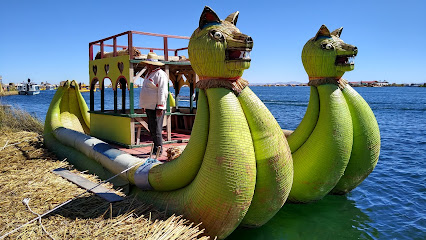
Reserva Nacional Titicaca
Explore the breathtaking landscapes and rich biodiversity of Reserva Nacional Titicaca, a serene retreat in the heart of Peru's natural beauty.
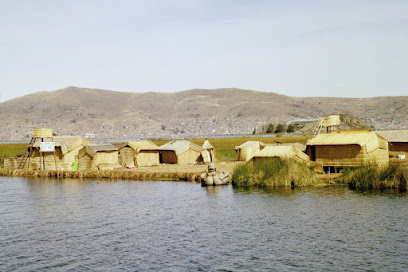
Typical Arc of Taquile
Experience the breathtaking beauty and rich cultural traditions of Taquile Island, a gem nestled in Lake Titicaca, Peru.
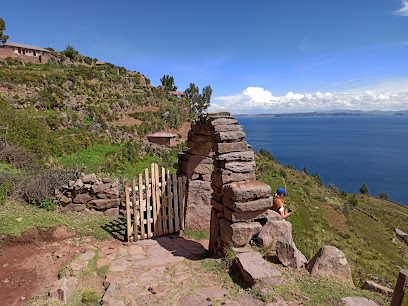
Arco Deustua
Discover the historical significance and architectural beauty of Arco Deustua, a must-visit landmark in Puno, Peru, rich in culture and charm.
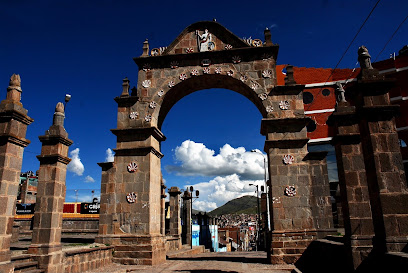
Lago Titicaca
Experience the magic of Lago Titicaca, the world's highest navigable lake, rich in culture and stunning landscapes that beckon travelers from all over.
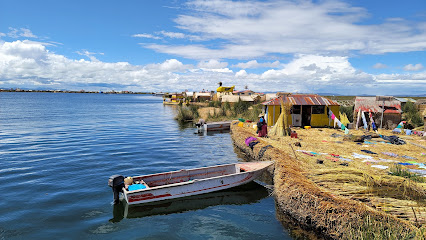
Isla del Sol
Explore the mystical beauty of Isla del Sol, the birthplace of the Inca Empire, and enjoy breathtaking landscapes and rich cultural experiences.
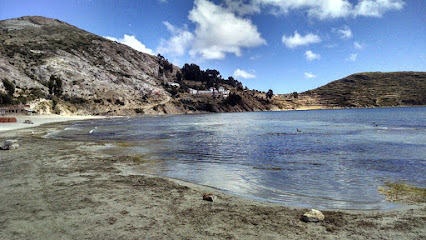
Puno Cathedral
Discover the stunning Puno Cathedral, a majestic symbol of faith and colonial architecture in the heart of Peru's cultural gem.
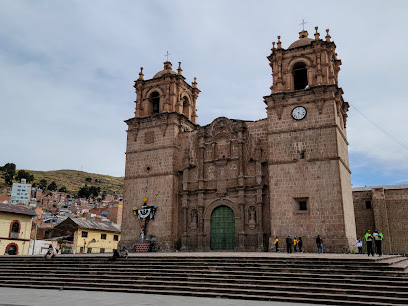
Titilaka
Experience luxury and tranquility at Titilaka, a stunning hotel on the shores of Lake Titicaca, where breathtaking views and rich culture await.

Aramu Muru
Explore Aramu Muru, Peru's mystical archaeological site with breathtaking views of Lake Titicaca and rich spiritual significance.

Titicaca Travel Peru
Experience the breathtaking beauty and rich culture of Lake Titicaca with expert tours from Titicaca Travel Peru, your gateway to adventure.
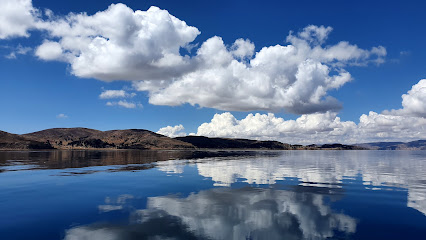
Uros Titicaca Lodge Puno Peru
Experience the unique charm of Uros Titicaca Lodge, a floating hotel where culture meets stunning natural beauty on Lake Titicaca.

Titicaca Lodge Peru
Experience the serene beauty and rich culture of Lake Titicaca at Titicaca Lodge Peru, a unique getaway on the Floating Islands of Uros.
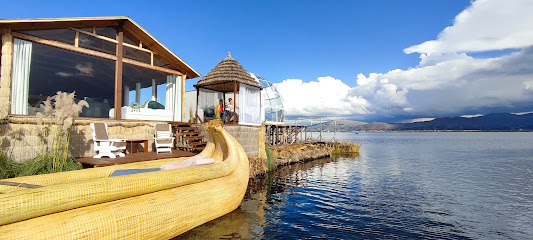
Castillo del Titicaca
Experience luxury and history at Castillo del Titicaca, a stunning castle hotel offering breathtaking views and rich cultural adventures on Lake Titicaca.

Coca Museum & Custumes
Explore the Coca Museum & Costumes in Puno, immersing yourself in Peru's vibrant culture and the historical significance of coca.
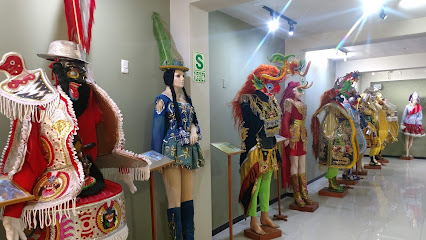
Unmissable attractions to see
Plaza Mayor de Puno
Discover the vibrant heart of Puno at Plaza Mayor de Puno, where culture, history, and local life come alive in a stunning setting.
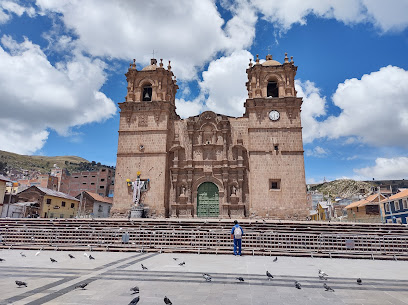
Pino Park
Explore the serene Pino Park in Puno, a beautiful park perfect for relaxation, family outings, and connecting with nature amidst urban life.
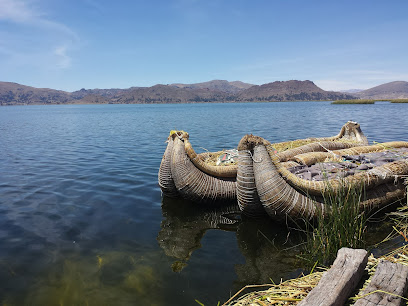
Puno Cathedral
Explore the stunning Puno Cathedral, a blend of colonial artistry and indigenous culture, offering deep insights into Puno's rich spiritual heritage.
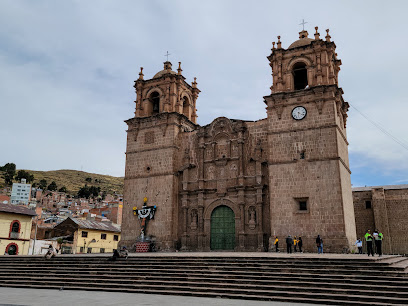
Museo Carlos Dreyer
Discover the artistic journey through Peru’s history at Museo Carlos Dreyer, a hallmark of Puno’s cultural heritage.
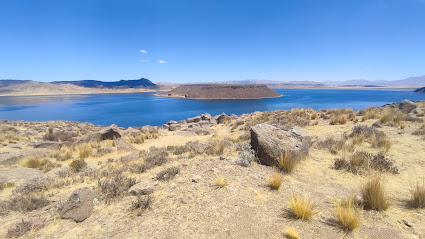
Inca Stairs
Explore the historic Inca Stairs in Yumani, Bolivia, a stunning tourist attraction with breathtaking views of Lake Titicaca and rich cultural heritage.
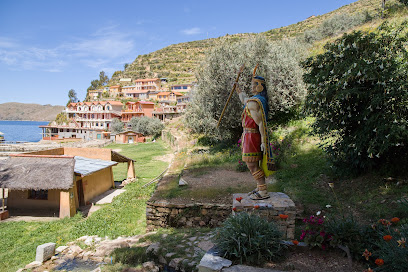
Puerta de Hayu Marca (Cristóbal Espinoza)
Explore the mystical Puerta de Hayu Marca, a breathtaking gateway to ancient Andean legends and stunning landscapes in Marcollo, Peru.
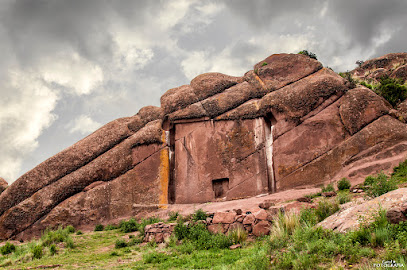
Chincana Labyrinth
Explore the ancient Chincana Labyrinth on Isla del Sol, a remarkable archaeological site rich in Inca history and breathtaking views of Lake Titicaca.
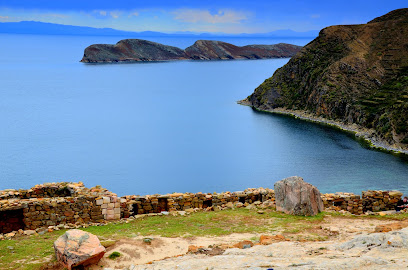
Lago Titicaca
Explore the breathtaking Lago Titicaca, the highest navigable lake in the world, and immerse yourself in rich cultural traditions and stunning natural beauty.
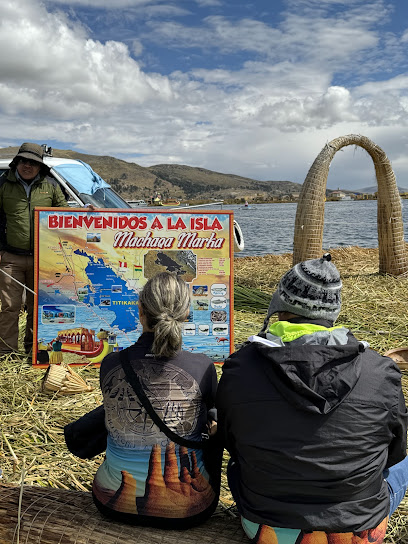
Malecón Ecoturístico, Lago Titicaca, Puno, Perú
Experience the tranquility and cultural richness of Malecón Ecoturístico, a picturesque park on the shores of Lake Titicaca in Puno, Peru.
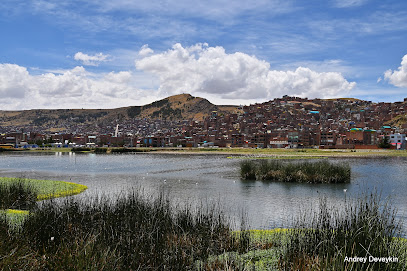
SACRED LAKE - Servicios Turísticos
Explore the majestic Sacred Lake Titikaka, a serene destination where nature, culture, and adventure converge in the heart of the Andes.
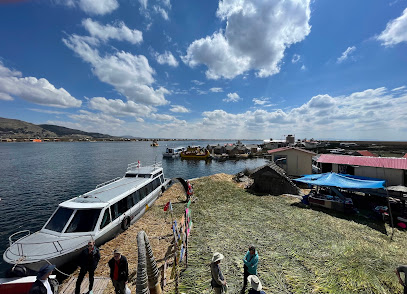
Titicaca Glamping Perú
Experience the beauty of Lake Titicaca with luxury glamping, adventure activities, and local culture at Titicaca Glamping, Peru.
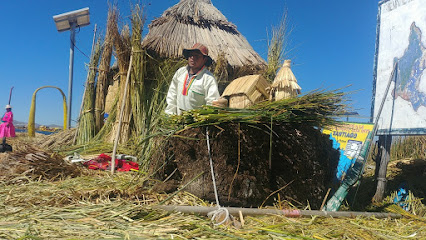
Huat'a Titicachi
Explore Huat'a Titicachi: A breathtaking tourist attraction in Canton Sampaya, Bolivia, blending natural beauty and rich cultural heritage.
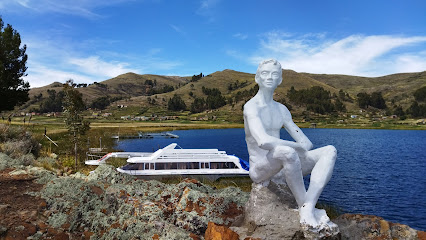
Essential places to dine
Brisas del Titicaca Asociación Cultural
Experience authentic Peruvian cuisine and vibrant cultural performances at Brisas del Titicaca in Lima.
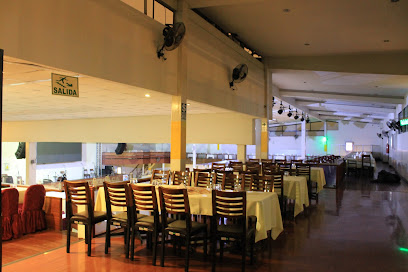
TITICACA KURMI LODGE PERU
Discover comfort and culture at Titicaca Kurmi Lodge, your gateway to exploring Lake Titicaca's floating islands and rich heritage.
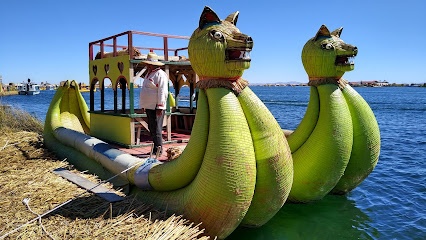
Mojsa Restaurant
Experience authentic Peruvian cuisine at Mojsa Restaurant in Puno, where every dish tells a story of flavor and tradition.
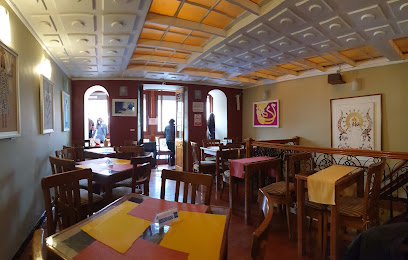
La Casona Restaurant
Experience delectable grilled dishes and vibrant flavors at La Casona Restaurant in Puno - where culinary tradition meets modern dining.
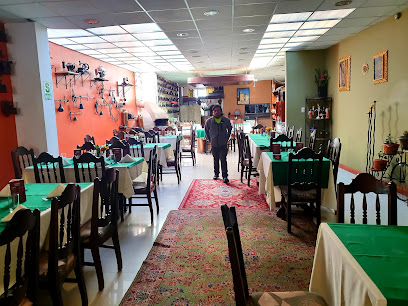
Cafe Bar de la Casa del Corregidor
Discover the vibrant flavors and warm atmosphere at Cafe Bar de la Casa del Corregidor in Puno - where every meal is an experience.
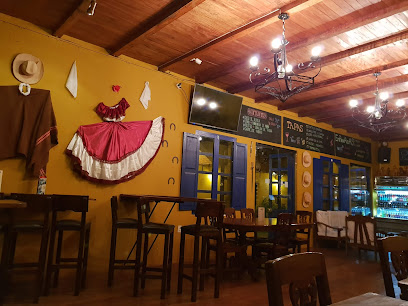
Tulipans Restaurant
Experience authentic Peruvian cuisine at Tulipans Restaurant in Puno - where flavor meets tradition in every dish.
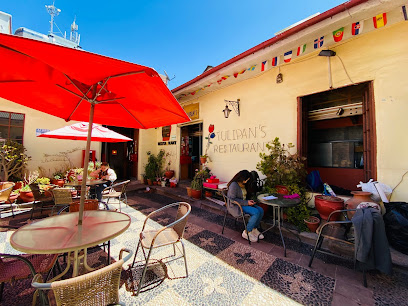
Casa Andina Premium Puno
Experience luxury at Casa Andina Premium Puno, where breathtaking views meet exceptional service on the shores of Lake Titicaca.
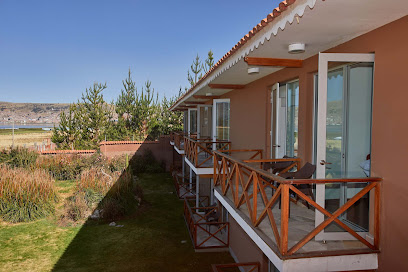
El Caserio De Huaje
Discover authentic Peruvian cuisine at El Caserio De Huaje in Puno – where tradition meets taste in every dish.
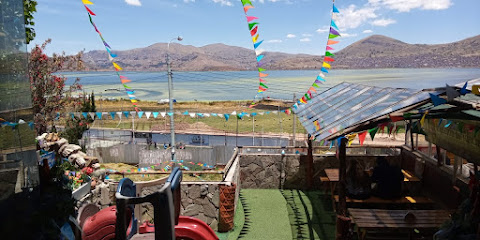
Inka's Rest
Experience comfort and local flavor at Inka's Rest, your perfect base for exploring Puno and Lake Titicaca.

Los Uros
Explore Los Uros: A Unique Floating Island Community on Lake Titicaca - A Cultural Experience Like No Other.
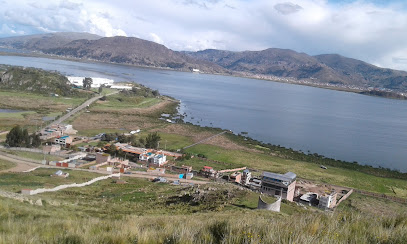
Pachamama
Experience authentic South American cuisine at Pachamama, where every meal is paired with stunning views of Lake Titicaca.
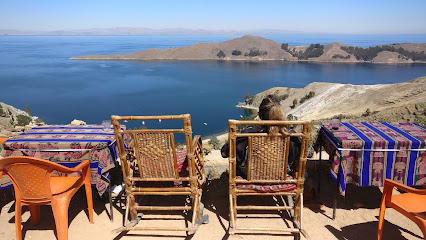
Cevicheria Moridiscos y Mariscos
Experience authentic Peruvian cuisine at Cevicheria Moridiscos y Mariscos, where fresh ceviche meets vibrant flavors in the heart of Puno.
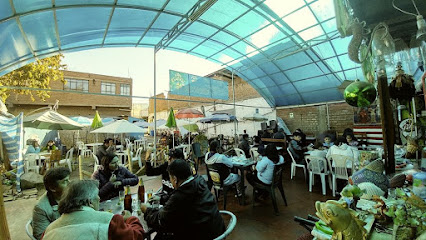
Complejo Turístico Flotante UROS TITICACA KURMI LAGO TITICACA PERÚ
Explore the enchanting floating islands of Uros Titicaca Kurmi in Puno, Peru - a cultural gem on Lake Titicaca offering unique experiences.
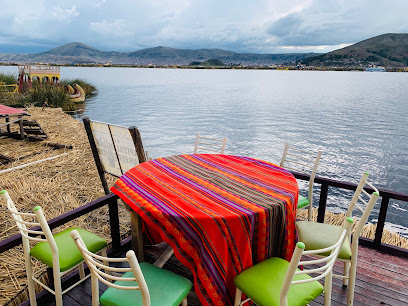
Alma Bar Restaurante
Savor authentic Peruvian cuisine at Alma Bar Restaurante in Puno—an unforgettable dining experience amidst cultural richness.

Restaurant Flor de Rosa
Experience exquisite Peruvian cuisine with breathtaking lake views at Restaurant Flor de Rosa on Taquile Island.
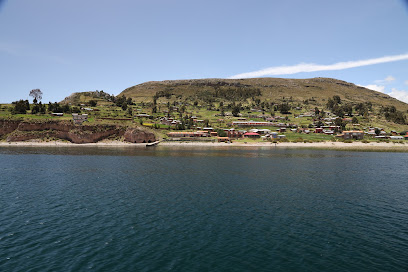
Markets, malls and hidden boutiques
QUINUA TAMPU
Discover QUINUA TAMPU, your perfect rest stop in Juli, Peru, with espresso delights and breathtaking views, ideal for all travelers.
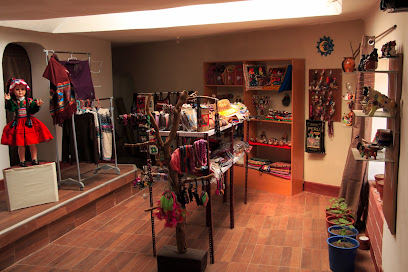
Artesanías de Madera Hualluni
Explore exquisite Peruvian craftsmanship at Artesanías de Madera Hualluni, where each handcrafted piece tells a story of culture and artistry.

El rancho de oscar
Discover local flavors at El Rancho de Oscar, a grocery store by Lake Titicaca offering fresh produce and traditional Peruvian delicacies.
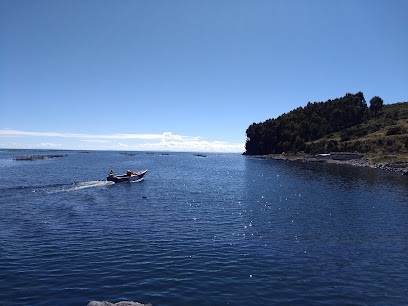
Jaulas De Oscar Cutipa
Experience the authentic flavors of Peru at Jaulas De Oscar Cutipa, a vibrant grocery store by Lake Titicaca in La Perla District.
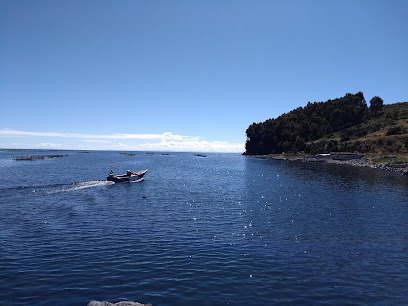
PRODUCCIÓN DE QUINUA ORGÁNICA
Experience the beauty of sustainable agriculture at the Organic Quinoa Production site in Peru, where health meets tradition in breathtaking landscapes.

Minimarket 3
Discover the local convenience at Minimarket 3 in Yumani, Isla del Sol - your essential stop for snacks and refreshments.

NÉMESIS Cyber Games
Explore the ultimate gaming destination at NÉMESIS Cyber Games in Juli, Peru—where passion for video games comes to life.
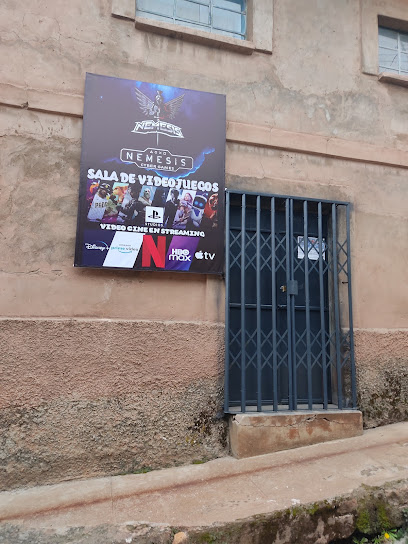
FARMASUR PERÚ
Your trusted pharmacy in Juli, Peru, offering comprehensive health solutions and personal care products for travelers and locals alike.
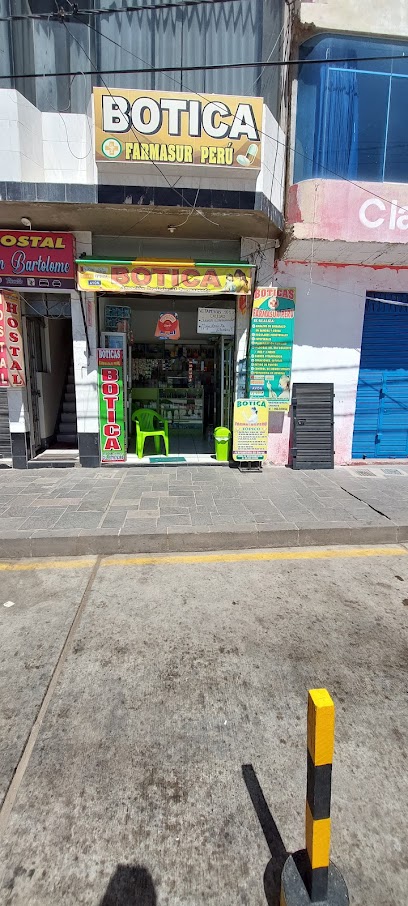
LIBRERIA. KIKE FOTOCOPIAS
Explore unique home goods and local crafts at Libreria Kike Fotocopias, a charming store in the heart of Juli, Peru.
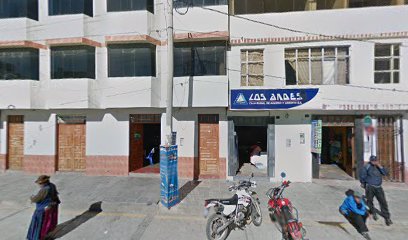
Bazar Patty
Explore Bazar Patty in Copacabana for unique home goods that showcase the beauty of Bolivian craftsmanship.

Feria Productos regionales Comestibles, Ropa, Artículos para la casa
Explore Feria Productos Regionales in Juli for unique Peruvian crafts, home goods, and a vibrant local atmosphere that captures the essence of Peru.
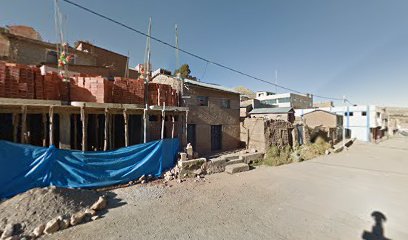
MULTIVENTAS Y MULTISERVICIOS JASHI
Explore Multiventas y Multiservicios Jashi in El Arenal: your go-to destination for local products and a taste of Peruvian culture.
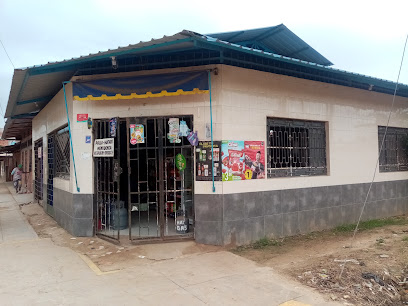
Tienda: Doña Benita
Explore the flavors of Bolivia at Tienda: Doña Benita, a charming grocery store in Cantón Sampaya showcasing local products and culinary delights.
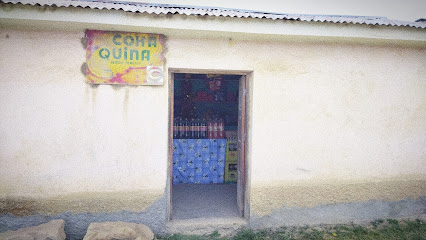
GALERIA TOKIO
Experience the heart of Peruvian culture at GALERIA TOKIO, where local flavors and traditional products come together in a vibrant grocery store.

Tienda de ropa normita
Explore unique Peruvian fashion at Tienda de Ropa Normita in Juli, a must-visit store for tourists seeking vibrant local apparel.
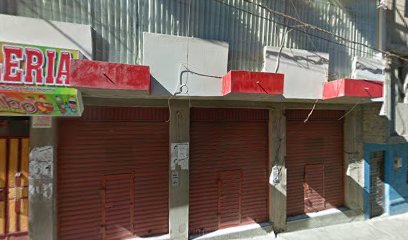
Essential bars & hidden hideouts
El Templo Video Pub
Discover the vibrant nightlife at El Templo Video Pub in Puno, where locals and tourists unite for unforgettable evenings filled with music and drinks.
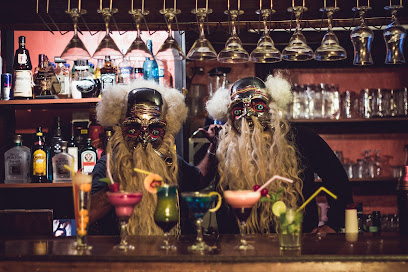
Positive Rock 'n Reggae
Discover the lively rhythms and vibrant atmosphere at Positive Rock 'n Reggae, Puno's favorite bar for music lovers and cocktail enthusiasts.
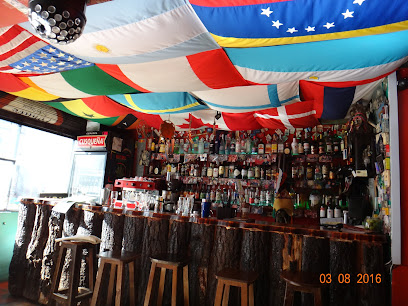
Kamizaraky Rock
Experience the flavors of Peru at Kamizaraky Rock, a grill restaurant that combines delicious cuisine with a vibrant atmosphere in the heart of Puno.
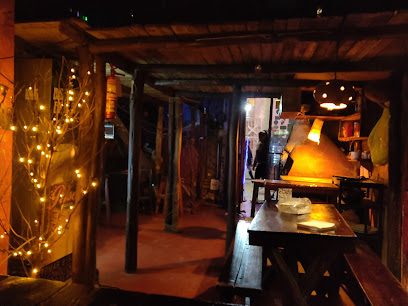
Kusillos Bar
Experience the vibrant nightlife of Puno at Kusillos Bar, where delicious drinks and local culture come together in a welcoming atmosphere.
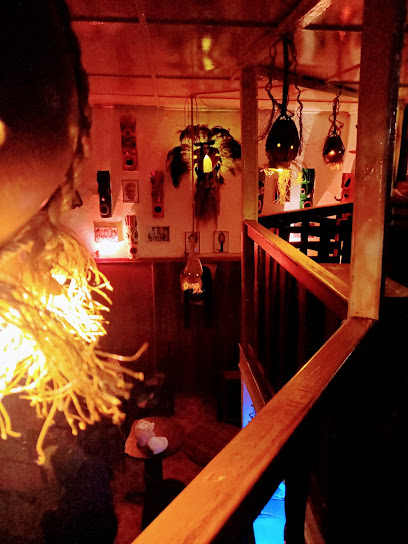
Taquile
Discover the rich culture and stunning landscapes of Taquile Island, a unique destination on Lake Titicaca that captivates every traveler.
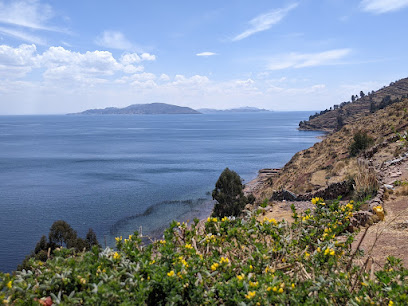
BAR «el Que Te Dije»
Discover the vibrant nightlife at BAR «el Que Te Dije» in Puno, where local culture meets a lively atmosphere and delightful drinks.
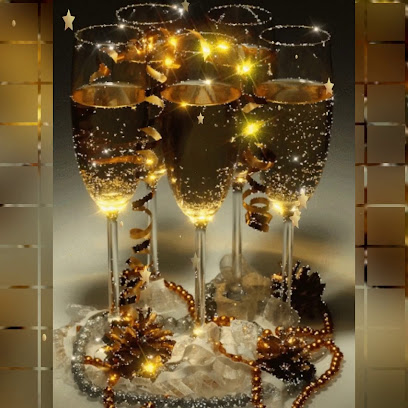
Pankara Bar
Experience the vibrant nightlife of Puno at Pankara Bar, where delightful cocktails and a lively atmosphere await every visitor.
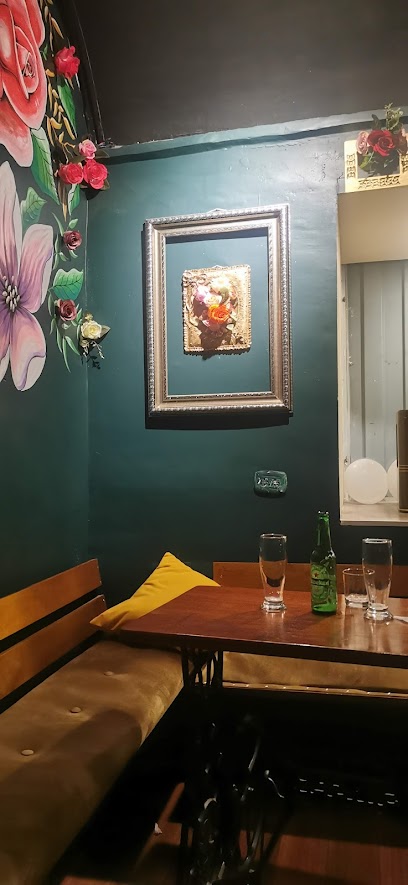
PERU BAR Puno
Discover the vibrant nightlife at Peru Bar in Puno, where local flavors and a lively atmosphere create unforgettable experiences for tourists.
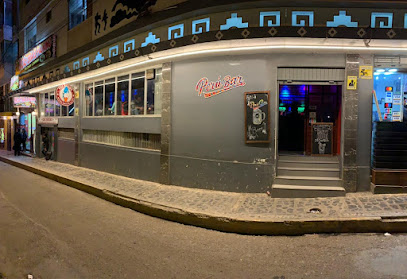
Mama Coca
Experience Puno's vibrant nightlife at Mama Coca, where local drinks and warm hospitality come together for an unforgettable evening.
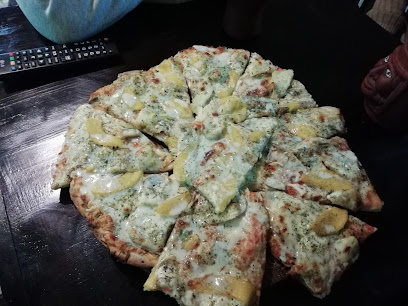
Santo Grial Molecular Bar & Snack
Discover the art of molecular gastronomy at Santo Grial Molecular Bar & Snack, a unique bar in Puno offering innovative cocktails and delicious snacks.
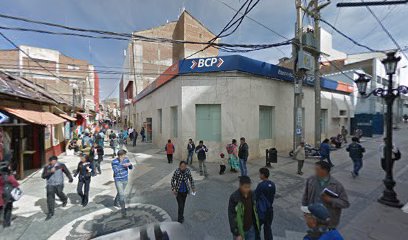
Bar Café Delta
Discover the lively atmosphere and local flavors at Bar Café Delta, the perfect bar for relaxation and socializing in Puno, Peru.
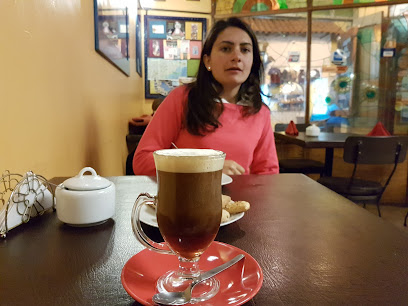
Kairos Food an Drinks
Discover the rich flavors of Puno at Kairos Food and Drinks, where every grilled dish is a celebration of local culinary traditions.
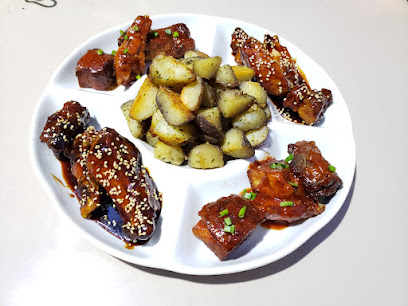
KARISIRI BAR (snack bar)
Discover the lively spirit of Puno at Karisiri Bar, where delicious snacks and refreshing drinks create unforgettable evenings.
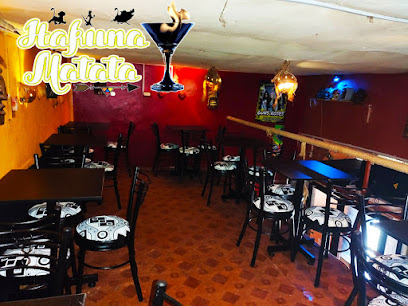
Karabotas
Experience the vibrant nightlife at Karabotas, a lively bar in Puno offering local drinks and a fun atmosphere for tourists and locals alike.

Jawka restobar
Discover the heart of Puno's nightlife at Jawka Restobar, where vibrant drinks and lively atmosphere await every visitor.
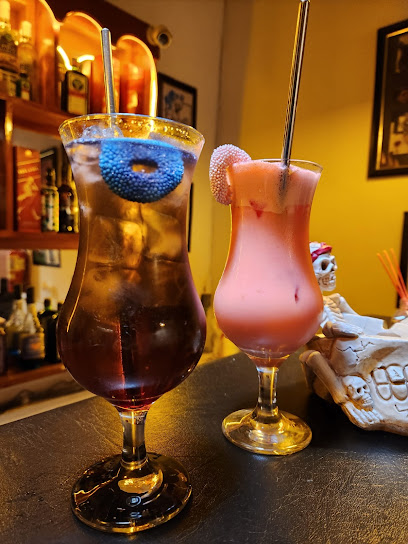
Local Phrases about Lake Titicaca
-
- HelloQanuq
[Kah-nook] - GoodbyeAllinllachu
[Aye-yeen-ya-chew] - YesArí
[Ah-ree] - NoMana
[Mah-nah] - Please/You're welcomeYuspanki
[Yoose-pan-kee] - Thank youSulpayki
[Sool-pie-kee] - Excuse me/SorryDispinsayu
[Dees-peen-sah-yoo] - How are you?Imaynalla kashanki?
[Ee-mine-yah-ya kah-shahn-kee] - Fine. And you?Allin. ¿Taytaykita?
[Aye-yeen. Tie-tie-kee-tah] - Do you speak English?Inglis simikunanki?
[Een-glees see-mee-koo-nahn-kee] - I don't understandMana rikunki
[Mah-nah ree-koon-kee]
- HelloQanuq
-
- I'd like to see the menu, pleaseMenu rikunichikuy
[Meh-noo ree-koo-nee-chee-kwee] - I don't eat meatKarne mana mikunchik
[Car-nay mah-nah mee-koon-cheek] - Cheers!¡Arriba!
[Ah-ree-bah!] - I would like to pay, pleaseHaraspa rikunichikuy
[Hah-rah-spa ree-koo-nee-chee-kwee]
- I'd like to see the menu, pleaseMenu rikunichikuy
-
- Help!¡Ayarí!
[Ah-yah-ree!] - Go away!¡Kutiy!
[Koo-tee!] - Call the Police!Polisiyta kutichiy!
[Po-lee-see-y-tah koo-tee-chee!] - Call a doctor!¡Dukturiyta kutichiy!
[Dook-too-ree-y-tah koo-tee-chee!] - I'm lostÑuqakuykusqa
[N-yoo-kai-koo-koos-kah] - I'm illÑuqaykusqa
[N-yoo-kai-koos-kah]
- Help!¡Ayarí!
-
- I'd like to buy...Ñuqam kashaniraqmi...
[N-yoo-kam kah-shah-nee-rah-k-mee] - I'm just lookingÑuqayku kashaniraqmi
[N-yoo-kai-koo kah-shah-nee-rah-k-mee] - How much is it?¿Imaynallam kay?
[Ee-mine-yah-yahm kai?] - That's too expensive¡Kanirun!
[Can-ee-roon!] - Can you lower the price?¡Takiriy!
[Tah-kee-ree!]
- I'd like to buy...Ñuqam kashaniraqmi...
-
- What time is it?¿Imaynallam kikin?
[Ee-mine-yah-yahm kee-keen?] - It's one o'clockTayta
[Tie-tah] - Half past (10)Iskay pataq
[Ees-kai pah-tahk] - MorningP'unchay
[Poohn-chai] - AfternoonCh'aski
[Chahs-kee] - EveningTuta
[Too-tah] - YesterdayK'aymanta
[Kai-man-tah] - TodayK'ay
[Kai] - TomorrowInti
[Een-tee] - 1Huk
[Hoo-k] - 2Iskay
[Ees-kai] - 3Kimsa
[Keem-sah] - 4Tawa
[Tah-wah] - 5Pichqa
[Peech-kah] - 6Suqta
[Sook-tah] - 7Qanchis
[Kahn-chees] - 8Pusak
[Poo-sahk] - 9Iskun
[Ees-koon] - 10Chunka
[Choon-kah]
- What time is it?¿Imaynallam kikin?
-
- Where's a/the...?¿Maymanta...?
[Mai-man-tah] - What's the address?¿Imaynallam wasiyki?
[Ee-mine-yah-yahm wah-see-key] - Can you show me (on the map)?¿Mapapiyta rimayki?
[Mah-pah-pee-y-tah ree-mai-key] - When's the next (bus)?¿Imaynallam ura?
[Ee-mine-yah-yahm oo-rah] - A ticket (to ....)Pasayku (....)
[Pah-sai-koo]
- Where's a/the...?¿Maymanta...?
History of Lake Titicaca
-
Lake Titicaca is considered a sacred site in Inca mythology. The Incas believed that the sun god, Inti, and the moon goddess, Mama Killa, were born from its waters. Furthermore, it is said that the first Inca king, Manco Cápac, and his wife, Mama Ocllo, emerged from the lake to establish the city of Cusco and the Inca civilization. The lake was a vital part of Inca culture and religion, symbolizing the origin of their world.
-
Before the rise of the Inca Empire, the Tiahuanaco civilization thrived around Lake Titicaca from approximately 300 to 1000 AD. The Tiahuanaco people are known for their impressive stone architecture and advanced agricultural techniques. The ruins of Tiahuanaco, located near the southern shores of the lake, are a testament to their engineering prowess and cultural significance. The civilization heavily influenced later cultures, including the Incas.
-
The Uros people are indigenous to the Lake Titicaca region and are known for their unique way of life, living on floating islands made of totora reeds. These artificial islands have been constructed and maintained for centuries, providing a sustainable and resilient habitat. The Uros culture is rich in traditions, with a strong emphasis on fishing, reed weaving, and boat building. Their way of life offers a glimpse into the ancient practices that have been preserved over generations.
-
The arrival of the Spanish in the 16th century brought significant changes to the Lake Titicaca region. The Spanish conquest led to the decline of indigenous civilizations and the imposition of colonial rule. Many of the local communities were converted to Christianity, and European agricultural practices were introduced. The city of Puno, located on the shores of Lake Titicaca, became an important colonial center and a hub for trade and missionary activities.
-
Today, Lake Titicaca remains an important cultural and spiritual site for the indigenous peoples of Peru. The lake is a focal point for various traditional festivals and rituals, such as the Feast of the Virgin of Candelaria in Puno, which blends indigenous and Catholic traditions. The preservation of ancient customs and the natural beauty of the lake continue to attract visitors from around the world, making it a unique cultural and historical destination.
Lake Titicaca Essentials
-
Lake Titicaca is accessible via two main cities: Puno in Peru and Copacabana in Bolivia. To reach Puno, you can fly into Inca Manco Cápac International Airport in Juliaca, which is about 44 kilometers away from Puno. From Juliaca, you can take a bus or a taxi to Puno, which takes around an hour. Alternatively, there are buses from major Peruvian cities like Cusco and Arequipa that go directly to Puno. If coming from Bolivia, you can take a bus from La Paz to Copacabana, and then cross the border into Peru.
-
Once in Puno, you can explore the city on foot or use local taxis, which are inexpensive and plentiful. For trips to the islands on Lake Titicaca, boats are the primary mode of transportation. Organized tours often include boat rides to popular destinations like the Uros Floating Islands, Taquile Island, and Amantani Island. Renting a bicycle is another option for exploring the surrounding areas.
-
The official currency in Peru is the Peruvian Sol (PEN). Credit cards are widely accepted in hotels, restaurants, and larger shops in Puno, but it's advisable to carry cash for smaller establishments and when visiting the islands. ATMs are available in Puno, but it's a good idea to withdraw sufficient cash before heading to more remote areas.
-
Puno is generally safe for tourists, but standard precautions should be taken. Avoid walking alone at night in unfamiliar areas and keep an eye on your belongings in crowded places. Be cautious in areas like the Puno bus terminal and the markets, where pickpocketing can occur. Always use reputable taxi services and avoid accepting unsolicited offers for tours or transportation.
-
In case of emergency, dial 105 for the police and 116 for medical emergencies. Puno has hospitals and clinics that can handle medical issues, but for more serious conditions, you may need to go to a larger city like Arequipa. It is highly recommended to have travel insurance that covers medical emergencies. Pharmacies are available in Puno for minor health issues and over-the-counter medications.
-
Fashion: Do dress in layers, as the weather can change rapidly. Bring a hat and sunscreen to protect against the high-altitude sun. Religion: Do respect local customs and traditions, especially when visiting religious sites. Always ask for permission before taking photos of people. Public Transport: Do be respectful and considerate. Don't eat or drink on public transport. Greetings: Do greet people with a friendly 'Buenos días' or 'Buenas tardes'. A handshake is also common. Eating & Drinking: Do try local dishes like 'trucha' (trout) and 'chicha' (a traditional drink). Don't refuse food or drink offerings, as it can be considered impolite.
-
To experience Lake Titicaca like a local, visit the local markets in Puno, where you can buy fresh produce and traditional Peruvian goods. Engage with the locals, who are often friendly and willing to share stories about their culture and history. Take the time to learn a few words in Quechua or Aymara, the local languages, to connect more deeply with the community. Don't miss the opportunity to participate in local festivals, such as the Candelaria Festival, which showcases traditional music and dance.
Trending Landmarks in Lake Titicaca
-
Brisas del Titicaca Asociación Cultural
-
TITICACA KURMI LODGE PERU
-
Reserva Nacional Titicaca
-
Typical Arc of Taquile
-
Arco Deustua
-
Lago Titicaca
-
Isla del Sol
-
Puno Cathedral
-
Titilaka
-
Aramu Muru
-
Titicaca Travel Peru
-
Uros Titicaca Lodge Puno Peru
-
Titicaca Lodge Peru
-
Castillo del Titicaca
-
Coca Museum & Custumes
Nearby Cities to Lake Titicaca
-
Things To Do in Puno
-
Things To Do in La Paz
-
Things To Do in Arequipa
-
Things To Do in Tacna
-
Things To Do in Arica
-
Things To Do in Cochabamba
-
Things To Do in Cusco
-
Things To Do in Machu Picchu
-
Things To Do in Iquique
-
Things To Do in Sucre
-
Things To Do in Potosi
-
Things To Do in Uyuni
-
Things To Do in Ayacucho
-
Things To Do in Santa Cruz de la Sierra
-
Things To Do in Ica










